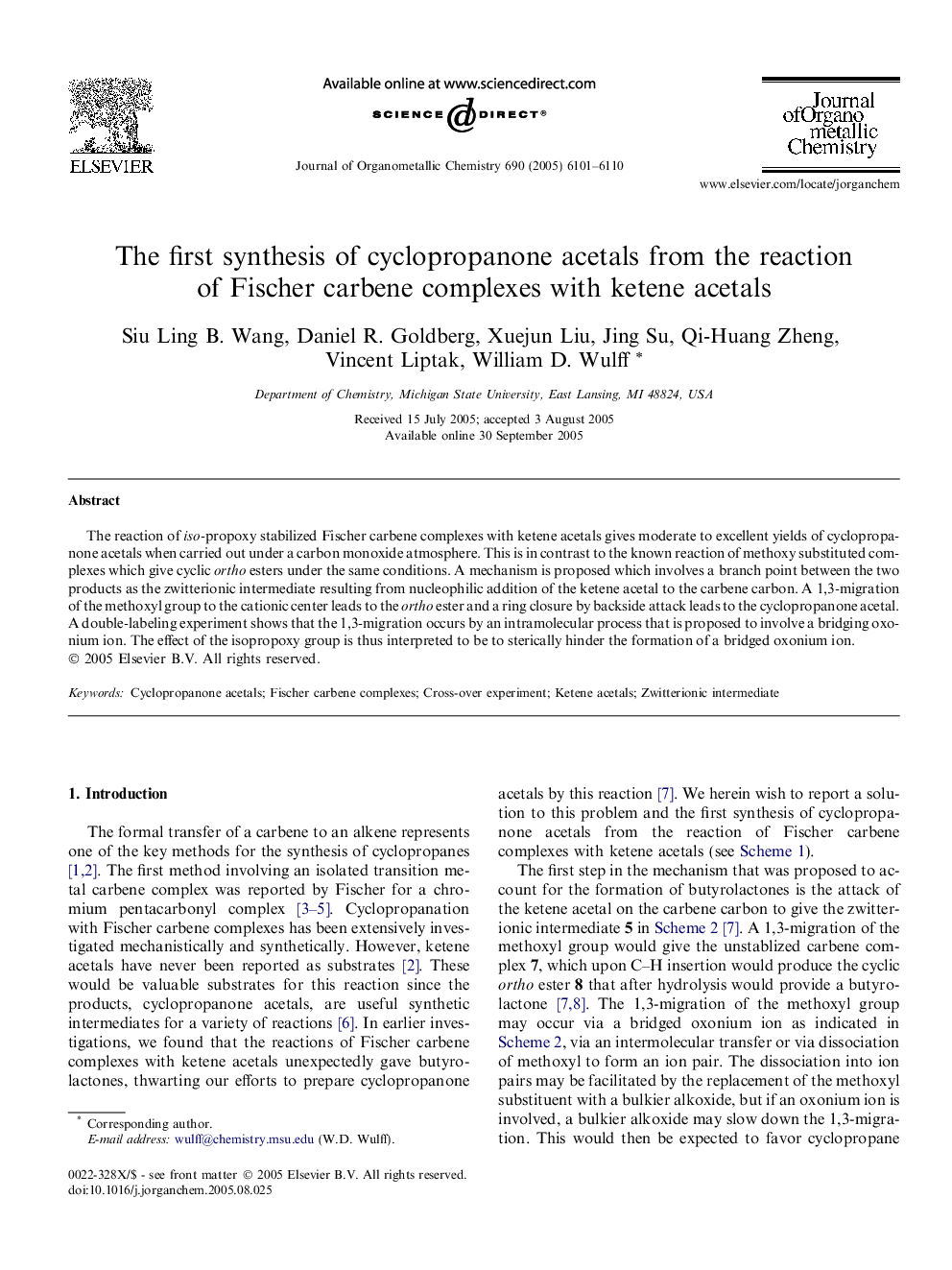| Article ID | Journal | Published Year | Pages | File Type |
|---|---|---|---|---|
| 1326126 | Journal of Organometallic Chemistry | 2005 | 10 Pages |
The reaction of iso-propoxy stabilized Fischer carbene complexes with ketene acetals gives moderate to excellent yields of cyclopropanone acetals when carried out under a carbon monoxide atmosphere. This is in contrast to the known reaction of methoxy substituted complexes which give cyclic ortho esters under the same conditions. A mechanism is proposed which involves a branch point between the two products as the zwitterionic intermediate resulting from nucleophilic addition of the ketene acetal to the carbene carbon. A 1,3-migration of the methoxyl group to the cationic center leads to the ortho ester and a ring closure by backside attack leads to the cyclopropanone acetal. A double-labeling experiment shows that the 1,3-migration occurs by an intramolecular process that is proposed to involve a bridging oxonium ion. The effect of the isopropoxy group is thus interpreted to be to sterically hinder the formation of a bridged oxonium ion.
Graphical abstractAnalysis of the mechanism previously proposed to account for the formation of butyrolactone products from the reaction of Fischer carbene complexes with ketene acetals led to the correction prediction that larger groups on the oxygen heteroatom substituent of the carbene complex would shift the reaction flux to the previously unobserved cyclopropanone acetals.Figure optionsDownload full-size imageDownload as PowerPoint slide
